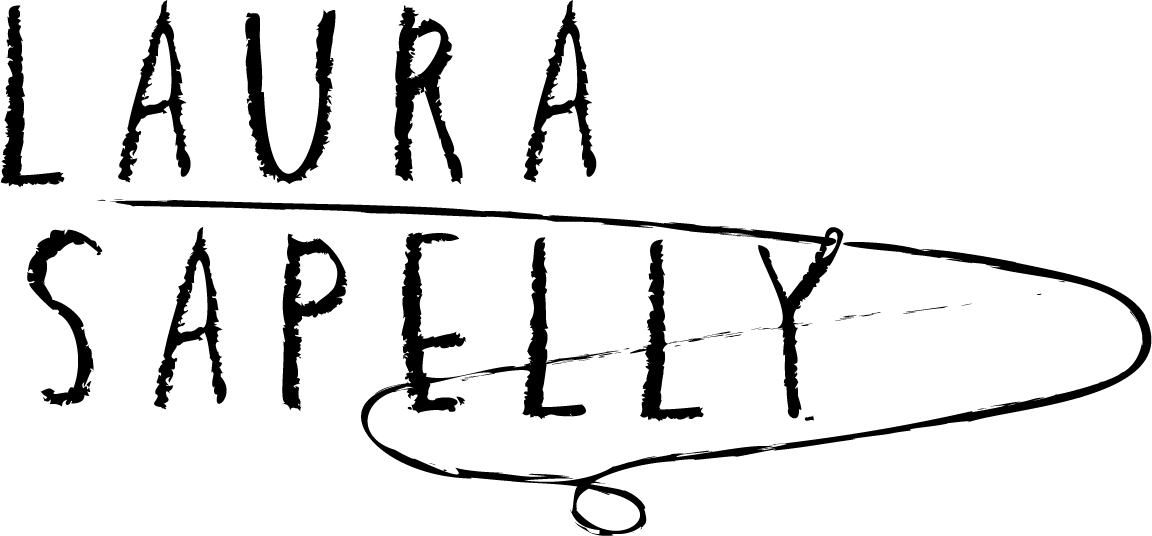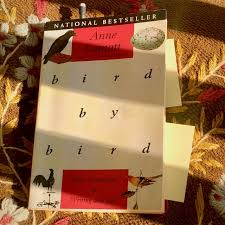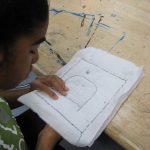Hello there! Get cozy…
Stitchers – whether you’re sitting in your comfy chair with your coffee, taking a break from your daily tasks,
or looking for ENGAGING content teaching in your home or in a school—
We’ve got your stitched stories covered!
Get ready for an in-depth look at the role of breaking blocks to BEGIN your stitching!
But before we dive deeper, let’s get inspired!
Ready for inspo? Your motivation mantra?..
This quote is from Los Angeles-based musician, Aimee Mann. When asked:
How do you face the blank page (or screen)?
she answered
“.. I set a timer for 15 minutes, and when the timer ends, that’s my work for the day. That way I pass the “what if this song is terrible” thinking…”
I love this simple approach to starting anything.
My sister loves to clean house, and I dislike it intensely. But I’ve started a related “15 minutes” strategy by listening to cool podcasts* as I swiff, scrub, dust.
And, if I say, oh, I’ll just clean for 15 minutes….I end up cleaning far longer…I’ll finish!
(*While cleaning this weekend, listening to Mann and collaborator Ted Leo’s The Art of Process podcast inspired me to write this blogpost!)
What is your blank page? How do you overcome fear or resistance to it?
For me, it’s also starting to stitch. Either starting anew or returning to a UFO.
(Un-Finished Object, in the stitching world terms!)
I tend to place my creative work at the end of my long list of “other more important responsibilities”
(READ: jobs, email, running…even cleaning!)
So, this blog post is all about how to start the stitch.
______________________
Quote from The Art of Process podcast, hosted by Aimee Mann and Ted Leo. >>Find it wherever you get your podcasts!
 What saying inspires and motivates you to start?
What saying inspires and motivates you to start?
Share on Instagram, Facebook page, or in our private FB group, Storied Sewing Circle ( >>join here!)
Here’s my “begin” story–What’s yours?
Billions of books have been written on how to overcome creative blocks. One of my favorites is Bird by Bird by Anne Lamott.
Lamott’s “short assignments” get the juices going.
For part one, we’ll feature the one-inch picture frame.
Lamott describes it:
“The first useful concept is the idea of short assignments. Often when you sit down to write, what you have in mind is an autobiographical novel about your childhood, or a play about the immigrant experience, or a history of–oh, say–say women.
But this is like trying to scale a glacier. It’s hard to get your footing, and your fingertips get all red and frozen and torn up. Then your mental illnesses arrive at the desk like your sickest, most secretive relatives….”
All of your mega-insecurities about making arrive faster than the speed of light!
Lamott continues:
“I go back to trying to breathe, slowly and calmly, and I finally notice the one-inch picture frame that I put on my desk to remind me of short assignments.
It reminds me that all I have to do is to write down as much as I can see through a one-inch picture frame. This is all I have to bite off for the time being. All I am going to do right now, for example, is write that one paragraph that sets the story in my hometown, in the late fifties, when the trains were still running.
E.L. Doctorow once said that “writing a novel is like driving a car at night. You can see only as far as your headlights, but you can make the whole trip that way.” You don’t have to see where you’re going, you don’t have to see your destination or everything you will pass along the way. You just have to see two or three feet ahead of you. This is right up there with the best advice about writing, or life, I have ever heard…”
———————
I totally relate the one-inch picture frame to Aimee Mann’s 15-minute timer.
The goal behind both of these methods is: start.
If we begin, we often have a much more difficult time stopping!
We get our head into the game and flow with our ideas.
Now, think about YOUR getting started story…
Other methods to start?
I turn my sewing machine on!
I remove it’s cover, “let it warm up” as I complete other tasks.
It’s on, it’s ready.
Since I’ve organized my one-bedroom apartment into an organized live/workspace, I know where everything is (most of the time).
I get the piece that I’m working on, or have prepared, and GO.
Next thing I know, an hour has passed – and I’ve NO idea what time it is!
Try it.
If you’re a hand stitcher, your version of “turning on” your materials may be getting them OUT of hiding and INTO a place where you’ll want to start!
What is YOUR method(s) of getting started?
Share on Instagram, Facebook page or in our private FB group, Storied Sewing Circle ( >>join here!)
Hey hey! References for educators and….. nerds!
Want more juicy info? Check out the refs below! Indulge in your LOVE of all things “stitch!”
Bird by Bird: Some Instructions on Writing and Life, by Anne Lamott. New York: Anchor Books, 1994. >>Find it here.
The Art of Process podcast, hosted by Aimee Mann and Ted Leo. >>Find it wherever you get your podcasts!
[This post may contain referral-affiliate links. If a purchase is made, I may receive a small commission at no extra cost to you.]
___________________________________
Why the School of Storied Stitching?
For me, needlework is a deeply meaningful form of personal expression that I want to share.
The sewing circle is a way to connect with fellow stitchers – and to remember those who are gone…







